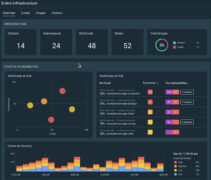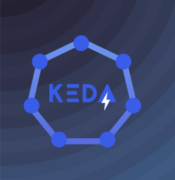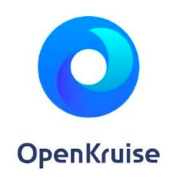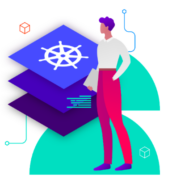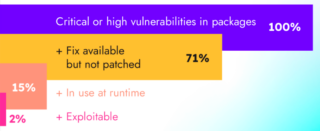Topic: kubernetes
Sysdig adds detection and response to CNAPP
Sysdig introduced agentless cloud detection based on open-source Falco, extending cloud detection and response (CDR) beyond workload agents to cloud, GitHub, and Okta logs in its Cloud-Native Application Protection Platforms (CNAPP). As organizations expand their cloud environments, they encounter sprawl consisting of hundreds of unregulated applications, services, and identities, which potentially present vulnerabilities. CNAPP can … continue reading
ITOps Times Open Source Project of the week: KEDA
KEDA is a Kubernetes-based Event Driven Autoscaler that helps users scale any container based on the number of events that need to be processed. Additionally, it can be added to any Kubernetes cluster and it works with standard Kubernetes components such as the Horizontal Pod Autoscaler. With KEDA, users can explicitly map the applications they … continue reading
ITOps Open-Source Project of the Week: Kuberhealthy
Kuberhealthy is a Kubernetes operator for running synthetic checks as pods and works best with Prometheus. The project is now part of the Cloud Native Computing Foundation (CNCF) and requires Kubernetes 1.16 or above. Users can write their own tests in any language and Kuberhealthy will run them to automatically create metrics for Prometheus. Kuberhealthy … continue reading
ITOps Times Open-Source Project of the Week: OpenKruise
OpenKruise is an extended component for Kubernetes that was built with a focus on application automation like deployment, upgrade, ops, and availability protection. The project became a Cloud Native Computing Foundation (CNCF) Incubating Project last month which means that the project is considered stable and used successfully in production. The majority of features offered by … continue reading
D2iQ announces update to its managed Kubernetes platform
The D2iQ Kubernetes Platform (DKP) 2.5 update simplifies multi-cluster and air-gapped deployments to give organizations greater consistency, visibility, security, and compliance across multi-cluster environments. Key enhancements in the new release include centralized multi-cloud, multi-cluster fleet management which enables customers to more easily manage a fleet of clusters through federated application management. Engineers can ensure consistency … continue reading
Report: Developers moving away from “DIY Kubernetes”
Back in 2020, 28% of respondents to VMware’s State of Kubernetes report were building Kubernetes on their own. Now, the 2023 version of the same survey is showing that only 16% of developers are building their own Kubernetes setups. According to VMware, this decrease is an indication that companies are realizing they don’t have infrastructure … continue reading
KubeCon Europe: Sumo Logic’s Predict for Metrics, Cosmonic Connect, and Solo.io’s Gloo Fabric
KubeCon Europe kicked off today in Amsterdam, and a number of companies have already shared their latest innovations at the event. Here are a few highlights so far: Sumo Logic announces Predict for Metrics Predictr for Metrics uses observability data to predict variable applications, cloud and infrastructure usage, and resource demands. The company believes the … continue reading
Kubernetes v1.27 replaces default image registry
The first Kubernetes release of 2023, Kubernetes v1.27 has been announced and it consists of 60 new enhancements, 18 of which are entering alpha and 13 of which are graduating to Stable. With this release, the image registry, k8sgcr.io, has been replaced with registry.k8s.io, which is fully controlled by the community. The old registry will … continue reading
Delivering zero trust security for Kubernetes in 6 steps
It’s no secret that businesses and organizations are embracing cloud services, containers, and other innovations to boost business productivity, scale more efficiently, and better manage infrastructure costs. However, transitioning legacy environments to the cloud introduces new challenges around securing dynamic and ephemeral cloud infrastructure. How can organizations unlock the full potential of the cloud without … continue reading
Virtualization is not a legacy technology, but fits into modern systems
DevOps, the cloud, microservices and Kubernetes have changed the way applications are engineered, deployed and managed. Yet about three-quarters of all applications are still running in an old style – on virtual machines. ITOps Times recently had a chance to speak with Sachin Mullick, senior manager for OpenShift virtualization at Red Hat, about how cloud … continue reading
Report: Container image vulnerabilities are plenty, but there is room to focus efforts
The need for more mature security practices when using cloud-native technology is clear with 87% of container images having high or critical vulnerabilities, up from 75% last year. Most of them at 71% of those vulnerabilities have a fix available that has not been applied. This data comes from the new 2023 Cloud-Native Security & … continue reading
Red Hat OpenShift 4.12 adds more security capabilities
Open-source solutions provider Red Hat today announced several new security and compliance capabilities for its Kubernetes platform RedHat OpenShift, available with the general availability of Red Hat OpenShift 4.12. According to the company, the new capabilities are intended to assist organizations in scaling workloads across the hybrid cloud without risking security. These enhancements also work … continue reading

